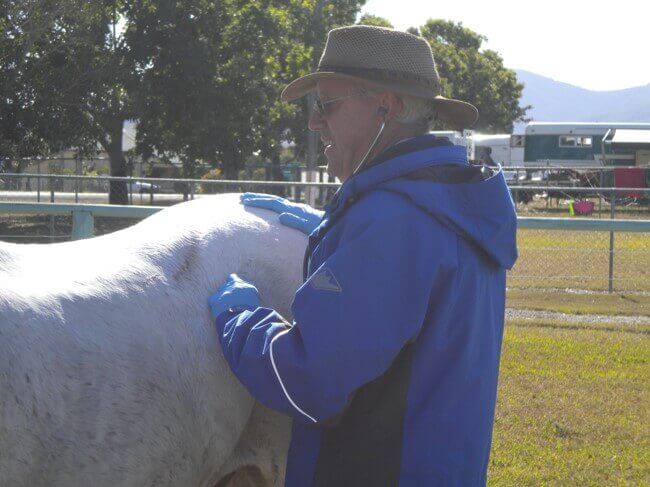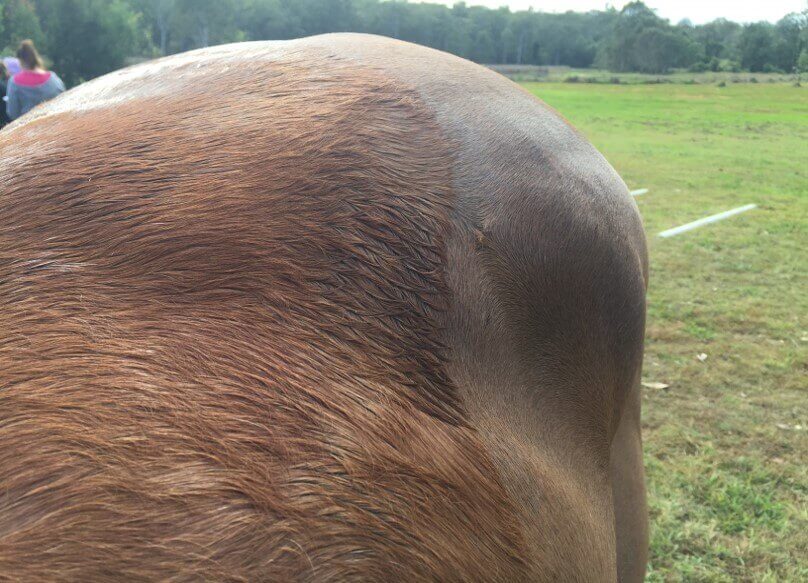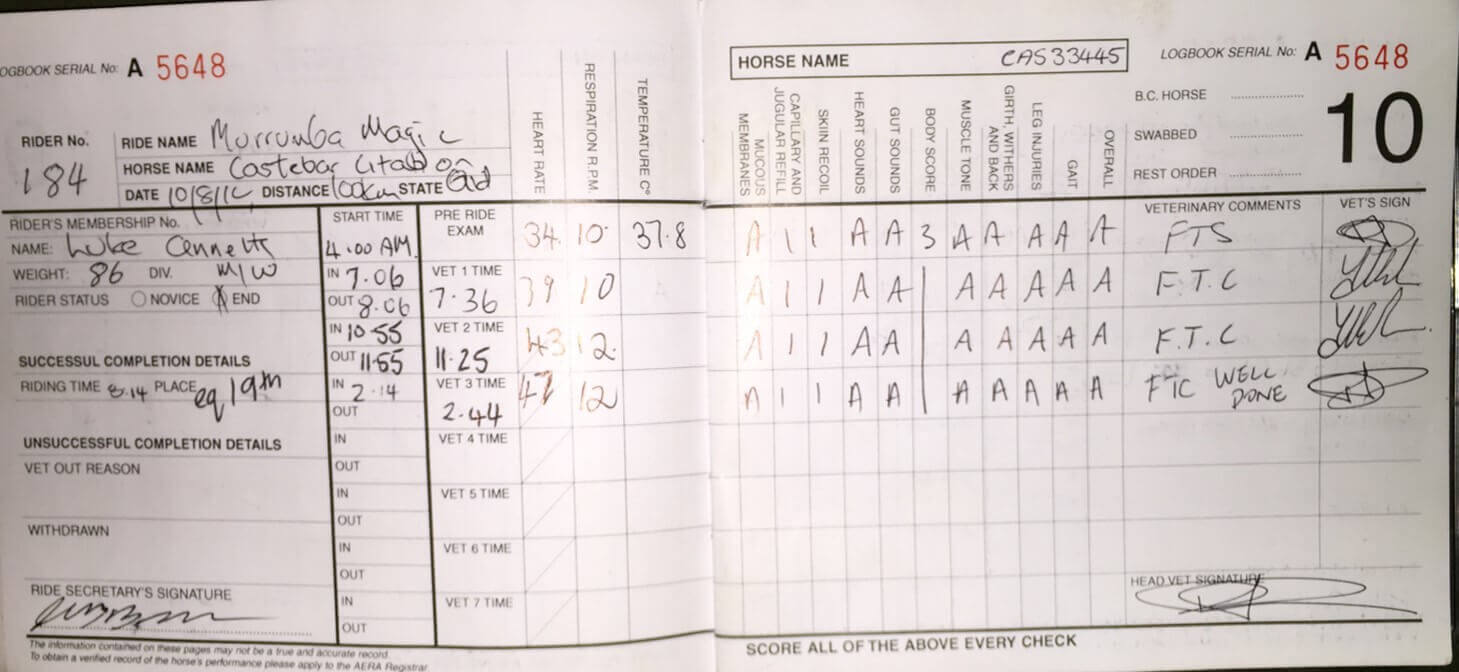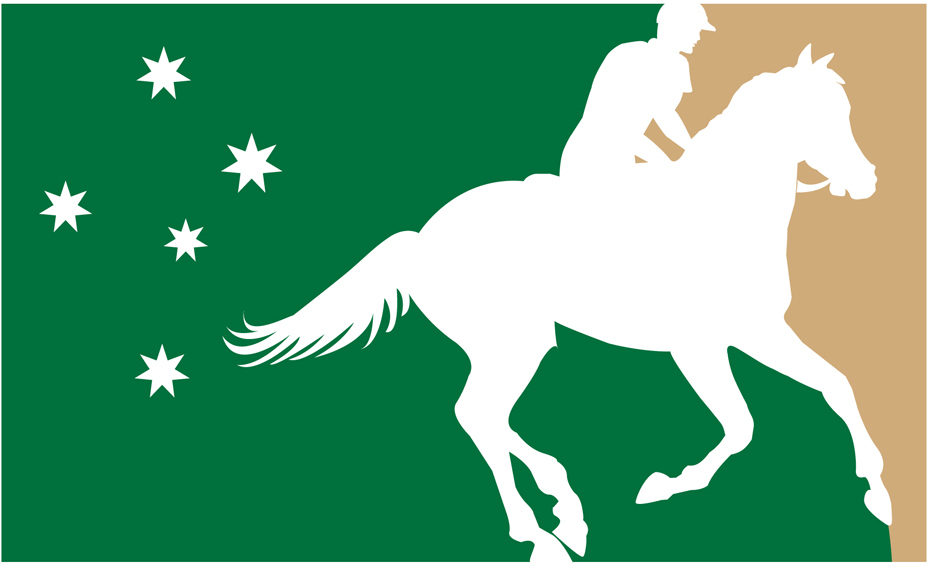Parameters Checked
- Mucous membranes
- Capillary and jugular refill
- Skin recoil
- Heart sounds
- Gut sounds
- Muscle tone
Mucous Membranes
- A = Clear pink and moist
- B = Moist pink, fawn
- C = Injected, pallid, tacky, dry
- D = Muddy, blue, purple, toxic line – elimination
- Clinical significance.
- Assessment of dehydration – moist or dry
- Assessment of colour –
- Pale – anaemia or low blood pressure
- Salmon pink and moist – normal
- Injected or dark reflects poor tissue perfusion due to dehydration, poor oxygen supply and/ or onset of toxaemia
Capillary and Jugular Refill
- 1 = Less than 1 second
- 2 = 1-2 seconds
- 3 = 2-3 seconds
- 4 = Greater than 3 seconds – elimination
- Clinical significance of prolonged CR reflects:
- Poor blood pressure
- Poor tissue perfusion
- Dehydration
- Toxaemia
Skin Recoil
-
- Additional parameter to assess metabolic status.
- Always taken at the point of the shoulder. No half scores.
- 1 = Less than 2 seconds
- 2 = between 2-3 seconds
- 3 = between 3-4 seconds
- 4 = Greater than 4 seconds
- Clinical significance:
- Unreliable
- Dehydration
- Differing response depending on site of test & wetness of skin
- Can be prolonged in normal horses
Skin Recoil Practicalities
- Always taken at the point of the shoulder.
- Important to allow comparison, as the result can be different, depending on the location of the test
- Should not be performed on the horses neck, or the shoulder blades
- Can vary depending on if the hair is clipped or wet
- Can vary with age
- Unreliable and should be interpreted in light of other metabolic parameters
- Should not be an isolated parameter used to indicate issues
Heart Sounds
- A = Normal rhythm and intensity
- B = Variable rhythm, increased intensity
- C = Pronounced dysrhythmia, onset of murmurs
- D =serious murmurs, or arrhythmias– elimination
- Second degree AV block is acceptable.
- Atrial fibrillation; pathological murmurs (pan systolic); ventricular extra systoles are unacceptable.
Gut Sounds
- A = Normal and active
- B = Slight decrease
- C = Marked decrease
- D = Absent – elimination
- Clinical significance.
- May be normal
- Louder – increased activity with gas production or diarrhoea
- Diminished
- may be normal with strenuous activity (flight and fright reflex)
- due to loss of water content in colon (impaction)
- due to impending ileus
- Absolute loss of gut sounds that fail to recover is significant
Gut Sound Practicalities
- Listen to the four quadrants for normal sounds
- Emphasis is placed on the small intestinal sounds as ileus can be a common problem in endurance horses, so early detection and management is important
- Can be slow if the horse has recently come off course due to exercise, or less cooling of the horse
- If in doubt a re-examination can be requested to ensure the horse recovers sufficiently, prior to the next loop, or completion/signing off the logbook
Muscle Tone
- Gluteal muscles should be soft and supple to palpate
- The muscles will be swollen, hard and painful where myositis is present
- Fasiculating muscles and shivering should be interpreted in light of the environmental temperatures and other metabolic parameters
- Critical part of musculo-skeletal examination to assess tie-up.
- A = Supple, elastic, fluid wave
- B = Firm, doughy
- C = Fasciculation/altered tone
- D = Cramped, flaccid, twitching, swollen – elimination
Overall Interpretation of Metabolic Parameters
- The elimination of a horse on metabolics should not be based on one parameter, but the overall picture and a number of parameters which indicate the horse is developing metabolic compromise
- E.g. high heart rate (but under 60), B/C for mucous membranes, >2 capillary refill, low or absent gut sounds. Especially if no improvement prior to re-examination
- Horses with synchronous diaphragmatic flutter (thumps), exertional rhabdomyolysis (tie-up) and colic encountered at the vet gate are automatically eliminated and sent for treatment






